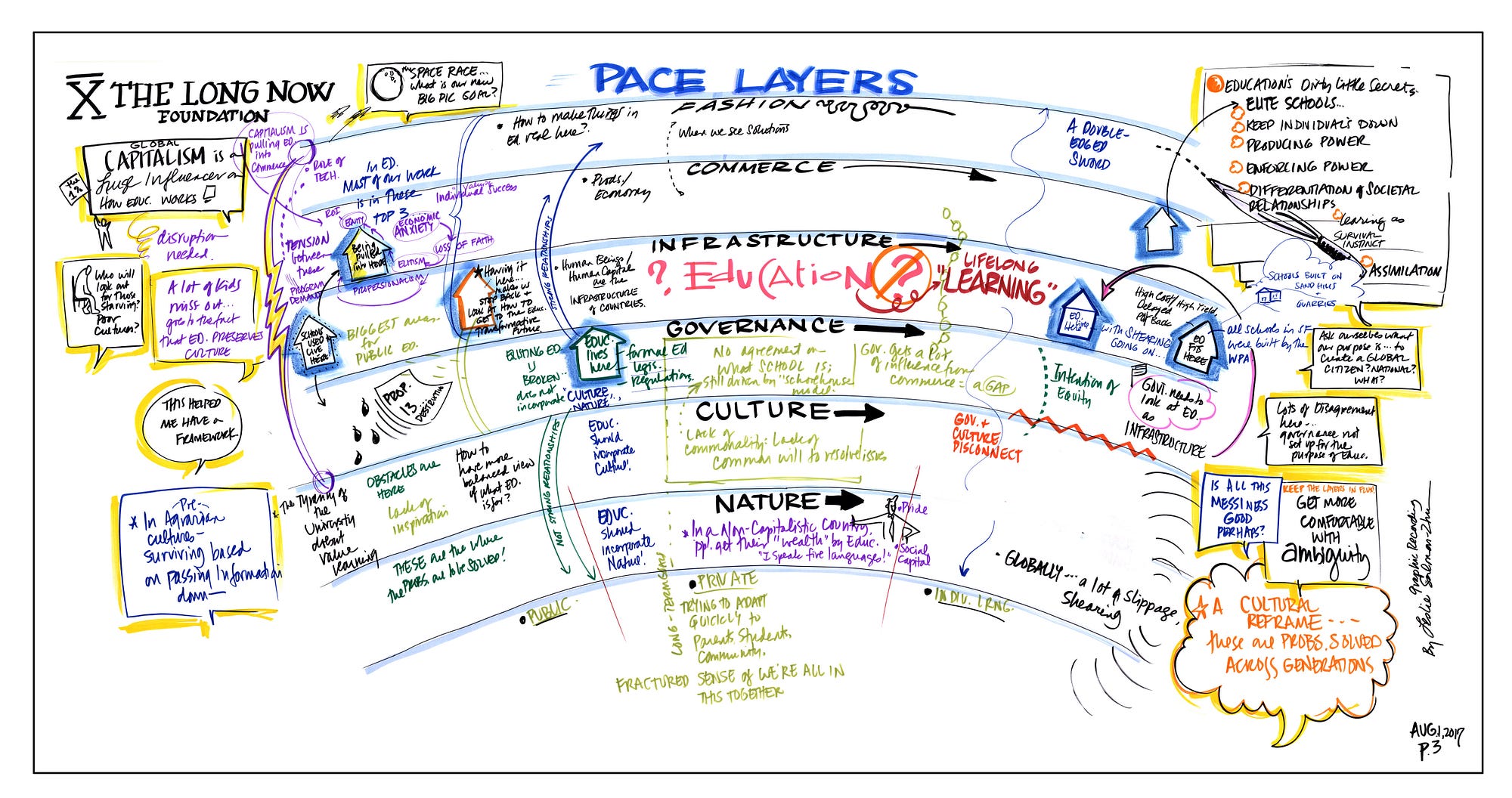
“Now” is the period in which people feel they live and act and have responsibility. For most of us, “now” is about a week, sometimes a year. For some traditional tribes in the American northeast and Australia, “now” is seven generations back and forward (350 years). Just as the [first] Earth photographs [from space] gave us a sense of ‘the big here, we need things which give people a sense of ‘the long now.’
— Stewart Brand, Long Now Foundation founder
Education is inherently a long-term proposition. Just as species adapt by learning and thereby ensure their survival, so too societies educate their people to ensure longevity through the ingenuity of future generations. As a system, education straddles the pressures of individuals’ and society’s immediate needs and inequities on the one side with desires for long-term positive outcomes and sustainability on the other.
For many U.S. schools and districts, this bridging might translate into reconciling immediate goals such as ensuring that all children read at grade level in the elementary years and helping students with trauma learn to self-regulate with longer-term goals such as rethinking curriculum for a future employment landscape that will be automated and digitally augmented. Yet even when education stakeholders see the value of addressing both time horizons, it can be incredibly difficult to imagine and pursue true transformation.
As Stewart Brand describes in The Clock of the Long Now: Time and Responsibility, after the Apollo program began returning color photographs of the earth from space, the earth’s problems lived in a new context, “the big here”, and took on new dimensions, stakeholders, and rationales. Having planet-scale perspective on atmospheric health, ocean health, and climate stability made national approaches obsolete. What might a similar context shift for education be? When considering education as a long-term proposition, what might the “long now” in education look like? What forces and dynamics might shape it? How might we cultivate a “long now” mindset in order to reframe pressing education challenges in ways that reveal purposeful approaches and thoughtfully-scaled solutions?
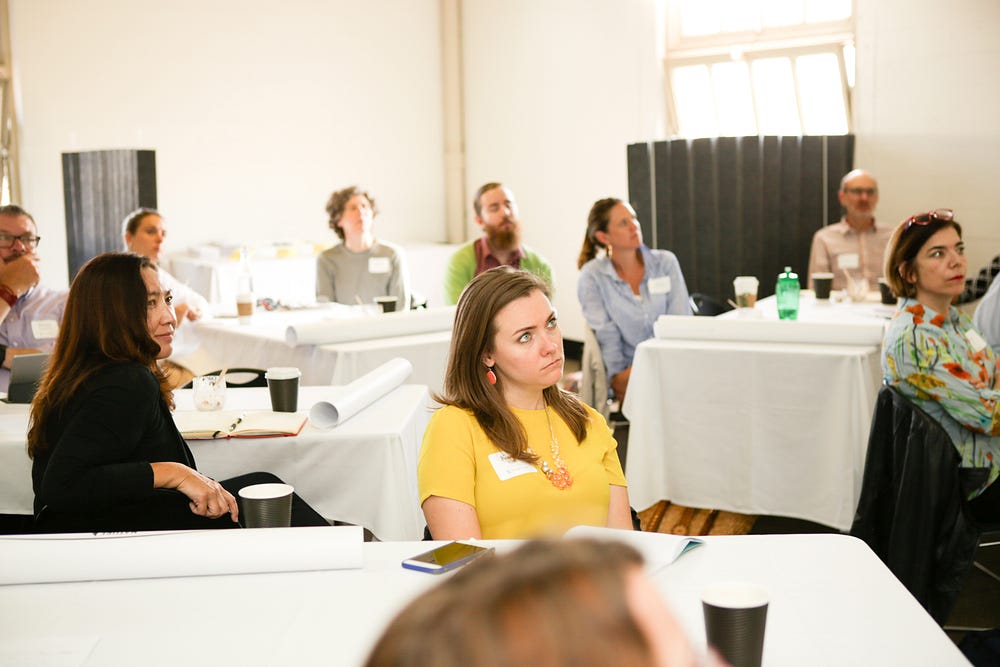
This was the domain of discussion and collaboration at the Long Now Educators workshop on August 1, 02017, hosted by the Long Now Foundation and KnowledgeWorks Foundation at the Fort Mason Center for the Arts. Insights from the workshop will be presented in a four part series of blog posts over the next four months.
The Dynamic of the Pace Layers
The Pace Layer framework is a thinking tool developed by Stewart Brand that effectively stretches the “now” to make long-term thinking (decades, centuries, and millennia) more concrete, accessible, and relevant to the present. It shows how different parts of society (its pace layers) act and change at different speeds, with the fast ones at the top and the slow ones at the bottom.
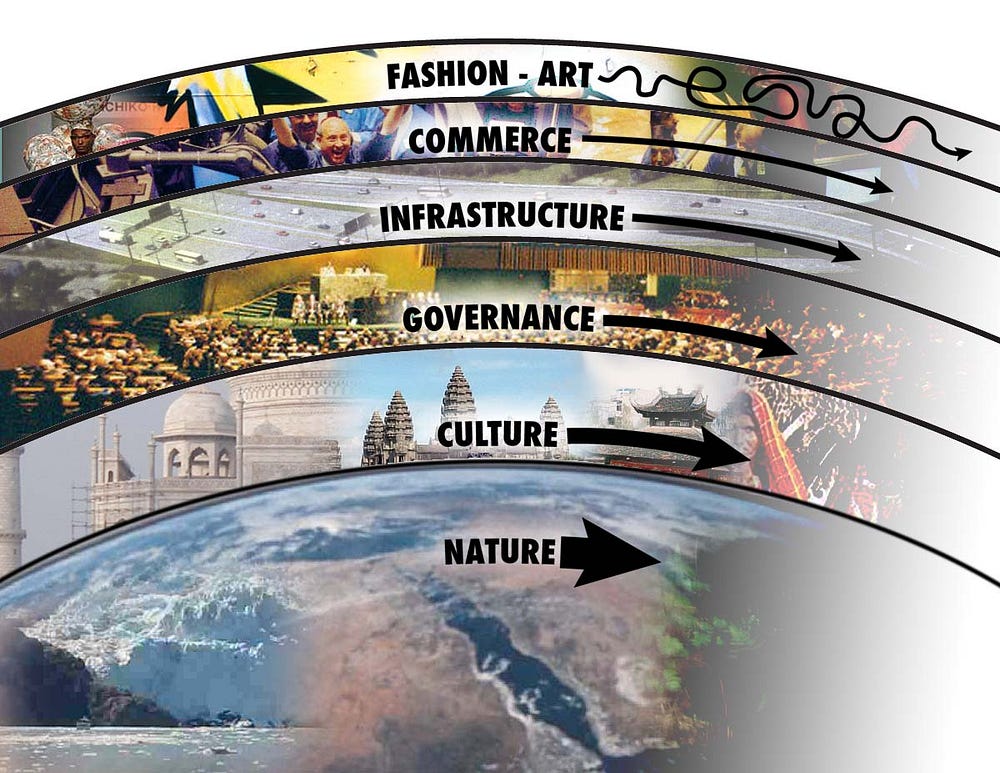
The fastest layer, fashion-art, moves in minutes and months. It is irreverent, engaging, and self-preoccupied. At this layer, a society’s culture is set free to experiment, albeit sometimes irresponsibly, learning through creativity and failure. It’s where we find relatively trivial phenomena such as fidget spinners and Lady Gaga’s meat suit, but also more significant developments such as ride-sharing and the breakthrough neo-expressionist painting of graffiti artist Jean-Michel Basquiat.
The barrage of ideas and propositions generated from the fashion layer gets sorted out at the commerce layer. Whether at age-old bazaars or modern-day stock markets and digital crossroads such as Etsy and eBay, commerce brings people together to make sense of new ideas that capture our attention. Commerce tames and harnesses the creative energy of fashion so that society can benefit from it.
In turn, infrastructure changes more slowly than commerce. It is high-cost, high-yield, and delivers delayed payback to society. It provides foundations and platforms for society to operate—among them transportation, communication, energy, and education. It is refreshed and modernized through the innovations from lower layers while being protected and validated through governance and culture. For example, Elon Musk’s company, TESLA, captures our attention through the fashion and commerce layers with its innovative electric cars and batteries, but ultimately aims to transform the transportation infrastructure. Despite its allure at the fashion layer and its transactions in the commerce layer, TESLA is really an infrastructure play, using the various pace layers to support the transformation.
Moving down a layer, the job of governance is to serve the larger, slower good for society. It provides stability. It preserves what we hold to be necessary and true. As Brand points out, social and political revolutions want quick change, demanding that governance moves faster than it is capable of, frustrating society. The constraints of governance force reflection and pause, which can be paralyzing or empowering.
Even slower to change, culture is the essential work of people as they gather to make sense of and integrate the many facets of life together on earth. It includes religion, language, and the enduring behaviors and social norms that help to provide constancy across centuries and even millennia. Nature is the slowest-changing layer, with the earth and the human body changing slowly over millennia. Nature’s power is immense when unleashed, whether as the processing capacity of the human brain or as the magnitude of earthquakes and hurricanes.
In healthy societies, the pace layers exist in relationship, communicating with each other, pushing and checking, yet moving independently, each at its own pace. This “slippage” between layers allows each layer to do its respective job and creates dynamic interactions that drive a society’s adaptability. Fast layers propose, disrupt and learn. Slow layers preserve, constrain and integrate. The dance between fast and slow layers can create adaptive strategies and societal resilience.
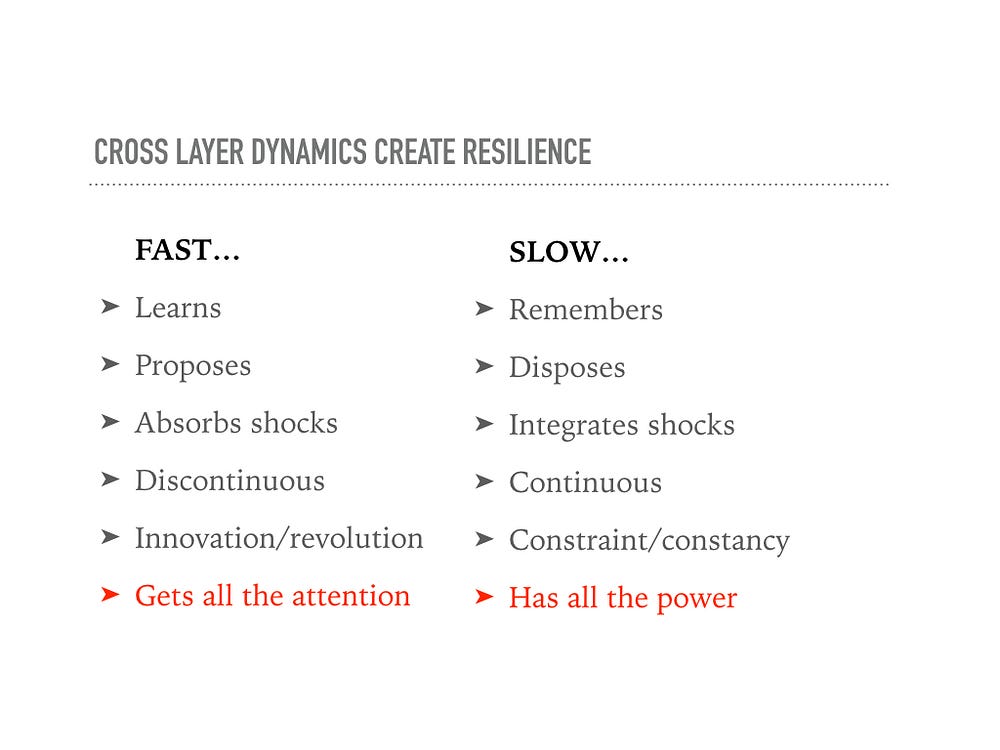
Events occurring in one layer may force another layer to move faster or slower than its typical pace of change. The popular acceptance of same-sex partners put pressure on legal and infrastructural supports to change more quickly than is customary, helping to resolve tension and conflict in workplaces and hospitals regarding issues such as rights to marriage, benefits, and visitation. Conversely, regulators in the governance layer can slow the pace of releasing disruptive new drugs or genetic therapies to allow for more informed integration into society. The way these disruptions are resolved determines a society’s health and resilience.
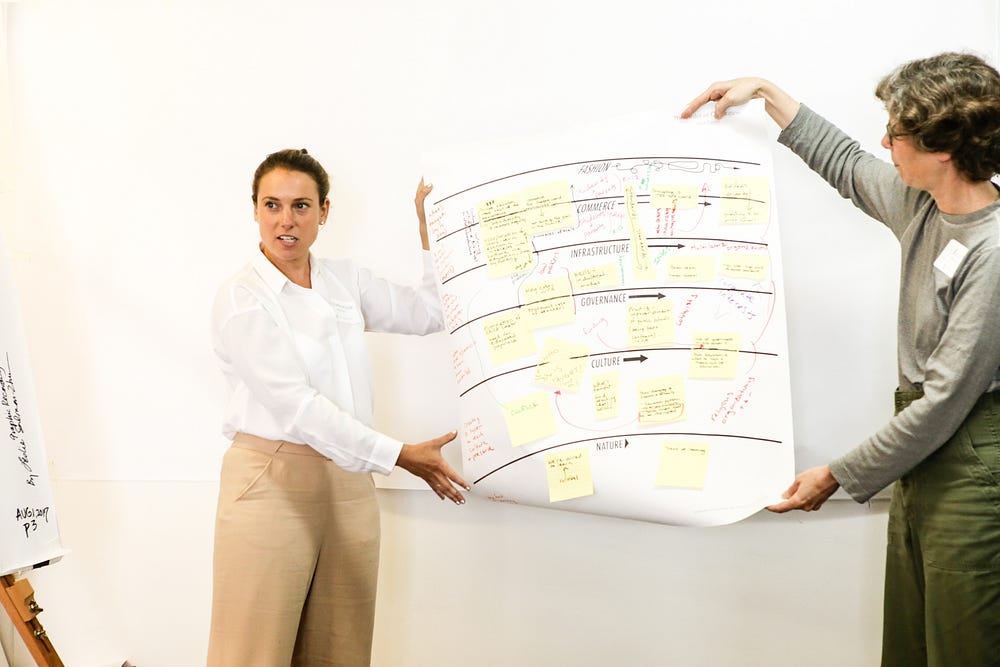
Cultivating the Long Now: Pace Layers as a Guide to Education Transformation
For educators, the pace layer framework provides a powerful thinking tool that can help re-contextualize pressing issues and questions, such as equity, and achievement, and the purpose of school. Using them can help stakeholders take a broader, longer view of solutions and interventions. It can also put education’s transformation into the context of a civilization’s transformation. When viewed through the pace layers, solutions for the achievement gap or the dropout crisis may come from unexpected layers with varying time frames for outcomes. The pace layer framework enables such possibilities by providing perspectives from multiple layers of society with distinctive stakeholders, intentions, and time horizons. The pace layer framework can help tease apart the complexity of education, revealing actors and events across societal domains and across time. It helps us ask:
- From which layer of society is this challenge originating, and what is does its pace and process of change look like?
- At what layer might a solution emerge, and how might the other layers be enlisted to support it?
- What outcomes should we look for at various layers?
The next blog post in this series explores education as intellectual infrastructure to aid in understanding possible origins and drivers for long-term transformation in education.
